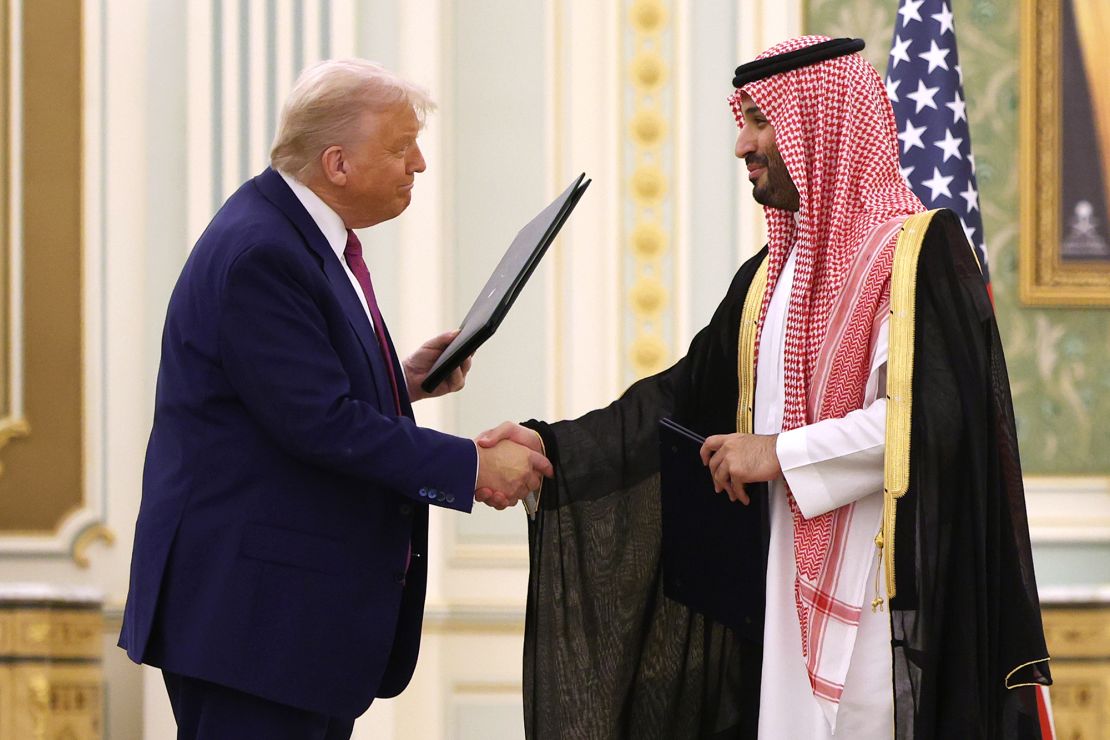US President Donald Trump just finished a lavish tour of Gulf Arab states, where every one of the three energy-rich nations he visited had a long wish list from the American leader.
While those nations reaped some big rewards from the trip, they fell short of others.
Saudi Arabia, Qatar and the United Arab Emirates all “wanted to showcase they were open for business, which they were able to do, and they wanted to get the US on side,” Dina Esfandiary, Middle East lead for Bloomberg Economics, told CNN. “They wanted to show that they were back in terms of being in America’s graces,” she said, adding that in return, Trump was able to get massive deals with headline figures.
Gulf countries have been looking to revamp their ties with the US, moving away from a transactional oil-for-security understanding to stronger partnerships that are rooted in bilateral investments and shared visions.
It was a “new dawn” in the US’ relationship with the Gulf, Jasmine El-Gamal, a Middle East analyst and former adviser to the Pentagon told CNN’s Becky Anderson.
Here’s what we know about what the Gulf states got, and didn’t get, out of Trump’s visit.
A ‘real’ American commitment to Riyadh
Saudi Arabia wanted a formalized security deal with the US. While it didn’t get that, experts say it came significantly closer to one.
“Saudi may not have gotten their formalized security agreement, but there was a lot of talk around it… So this may have been, rather than the culmination of the process, the continuation of the conversation,” Esfandiary said, adding that Washington may not be as enthusiastic about the arrangement as Riyadh has been.
Last year, the two nations came close to finalizing a landmark defense and trade pact – but the deal stalled over the Saudi insistence that Israel commit to a path toward Palestinian statehood.
Riyadh did get a handful of arms deals during Trump’s trip that may pave the way for a wider agreement, however, experts said.

At a formal signing ceremony in a gilded ballroom at the Saudi capital’s Royal Court on Tuesday, Trump and Crown Prince Mohammed bin Salman signed memoranda of understanding, letters of intent and other executive agreements spanning different government agencies.
Saudi Arabia also committed $600 billion in US investments, including an expansive defense partnership valued at nearly $142 billion, which the White House has touted as the “largest defense sales agreement in history.”
The visit fell short of offering Riyadh US cooperation on a civilian nuclear program, which the kingdom had been eyeing.
The program has been held up over Saudi Arabia’s insistence on enriching uranium domestically – raising concerns in the US and Israel over nuclear weapons proliferation. Uranium, when enriched to high levels, can be used to produce nuclear weapons.
For the Saudis, the détente between the US and Syria was also a major diplomatic win. During his visit, Trump met and had tea with Syrian President Ahmad al-Sharaa, a former jihadist who until recently had a $10 million US bounty on his head. The US president also announced that he plans to lift sanctions that had been placed on former Syrian President Bashar al-Assad, possibly breathing life back into the country’s crippled finances.
Gulf states, including Saudi Arabia, have been keen to invest in Syria and prop up its economy but have been wary of violating US sanctions. Trump’s move is likely to remove such barriers, making way for potentially billions of dollars in investments and returns.
Having the rapprochement between the US and Syria take place under Saudi auspices may give Riyadh greater opportunities in Damascus.
Saudi Arabia ultimately got a “real expression of American commitment” to the kingdom, Esfandiary said.

